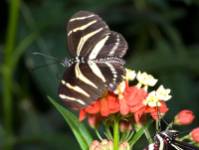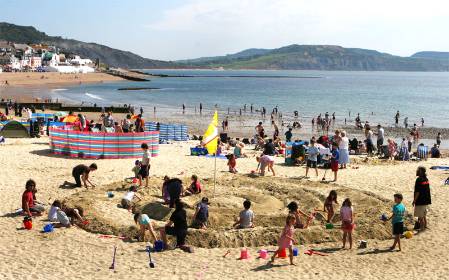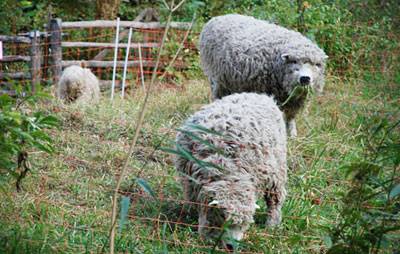They say the weather’s going to be unpredictable over the weekend, so here are some ideas for indoor and outdoor ventures.
 Butterflies in the house. Wing your way to our Butterfly Explorers exhibition. Just this week some beautiful new species have arrived. The vibrant zebra butterflies are already making their presence felt in the butterfly house and the shy glasswings are still hiding out, but in about 9 weeks these will be much more noticeable. Did you know the zebra butterfly (right) was declared the Florida State Butterfly? And that if you ever decided to eat a glasswing it would have a nasty taste (due to the poisonous sap it sucks on heliotrope leaves). Inside the butterfly house, the vegetation is thriving with bright bromelias and milkweed. Also look out for the peanut plants, a hit with the blue morpho caterpillars. Outside in the British garden, all the border seedlings and nasturtiums are really starting to show. Kids are loving the outdoor treehouse, log pile house and maze in the garden area. So let’s hope the sun shines for some of the weekend.
Butterflies in the house. Wing your way to our Butterfly Explorers exhibition. Just this week some beautiful new species have arrived. The vibrant zebra butterflies are already making their presence felt in the butterfly house and the shy glasswings are still hiding out, but in about 9 weeks these will be much more noticeable. Did you know the zebra butterfly (right) was declared the Florida State Butterfly? And that if you ever decided to eat a glasswing it would have a nasty taste (due to the poisonous sap it sucks on heliotrope leaves). Inside the butterfly house, the vegetation is thriving with bright bromelias and milkweed. Also look out for the peanut plants, a hit with the blue morpho caterpillars. Outside in the British garden, all the border seedlings and nasturtiums are really starting to show. Kids are loving the outdoor treehouse, log pile house and maze in the garden area. So let’s hope the sun shines for some of the weekend.- Butterflies in the cocoon. Continuing on the butterfly theme, and to check that you’ve actually learned something at Butterfly Explorers, head into the magnificent Darwin Centre Cocoon and spend some time at the ‘Organising nature’ butterfly interactive display. Have fun using the touch screen to play at identifying butterfly species. There are lots of fun interactive games and displays in the Darwin Centre. At the Darwin Centre you can also catch a family show or talk in the Attenborough Studio, so check what's on. Browse the Darwin Centre Cocoon highlights on our website.
- Wildlife in the garden. This is one of the best times to explore the Museum's Wildlife Garden and after the last 2 weeks of sunshine and recent rain, it's really a pretty sight with the apple blossom and bluebells. The latest excitement in the garden is that a family of foxes and little cubs have been spotted recently, but we can't say where as we wouldn't want them disturbed.

- Life's a beach for a fossil fan. Discover the Jurassic Coast at the free Lyme Regis Fossil Festival (above). Over 20 of our Museum scientists will be there identifying fossils, and leading talks and walks. This popular family event mixes science with music and the arts, on the beach. 'Dead...And Alive!' is the theme of this year's festival, which celebrates the 2010 International Year of Biodiversity. Find fossils in fossil digs, go on 'fossilteering' walks and learn about the seashore. We celebrate some extraordinary fossils in our Species of the Day this weekend.
- Walk on the wild side of Brighton. Head down to Brighton seafront and experience our free Wild Planet outdoor exhibition featuring some of the best wildlife images in the world. 80 panels make up this stunning promenade display of winning photographs from past Wildlife Photographer of the Year competitions.




